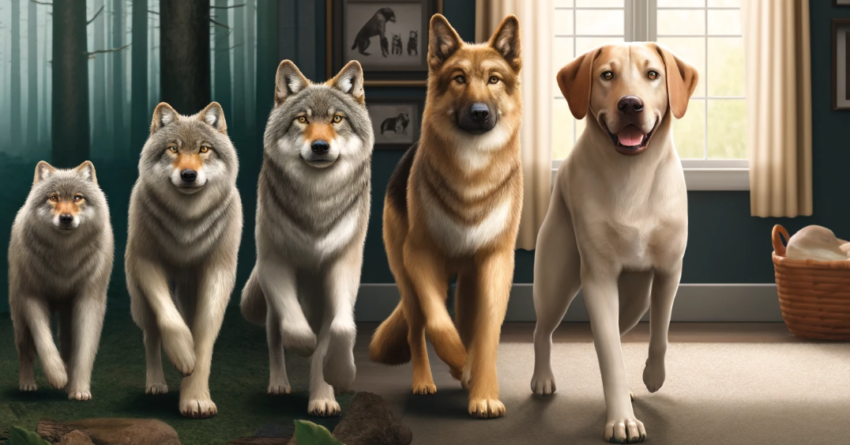| Listen to our audio presentation: Ancient Bond Between Dogs and Humans |
Dogs, beloved as man’s best friend, have a rich evolutionary history that ties them closely to wolves. Scientific studies and genetic research have confirmed that all modern dogs, from the tiniest Chihuahua to the towering Great Dane, descend from wolves. This relationship was cemented over thousands of years, beginning with the domestication of wolves around 20,000 to 40,000 years ago.
The initial step in this remarkable evolutionary journey likely involved wolves that scavenged near human settlements. These wolves gradually adapted to a new niche, finding food and safety alongside humans. Over time, through natural selection and emerging human breeding practices, these early wolves evolved distinct characteristics that led to the first domestic dogs. Genetic evidence shows that this domestication process was complex, involving multiple events and possibly different populations of wolves.
Today, despite their domestication, dogs retain many genetic similarities with their wild ancestors, including traits related to diet, behavior, and disease susceptibility. This genetic connection has been invaluable in understanding canine health issues and their natural instincts.
The domestication of dogs from wolves is not just a fascinating story of evolution but also a glimpse into human history. Early humans likely benefited from this partnership through enhanced hunting capabilities, improved waste management around settlements due to scavenging wolves, and an early-warning system against predators and intruders, which increased human survival rates.
Genetic Evidence
All modern dogs are descendants of wolves, and this is supported by robust genetic data. Researchers have found that the domestic dog (Canis lupus familiaris) is a subspecies of the wolf (Canis lupus). The genetic split between dogs and wolves occurred between 20,000 to 40,000 years ago, likely when certain wolves began associating more closely with humans.
Domestication Process
The process of dog domestication involved these early wolves gradually adapting to human environments. As these wolves benefitted from leftover food and lesser competition compared to their wild counterparts, natural selection favored those with traits that made them more amenable to living near humans, such as tameness and less aggression. Over generations, these traits became more pronounced, leading to the first truly domesticated dogs.
Genetic Studies
Genetic studies have revealed a lot about how dogs evolved from wolves. For example, analysis of ancient dog and wolf DNA shows multiple domestication events across different geographic regions. This suggests that dogs were domesticated independently at different times and places, with genetic contributions from various local wolf populations.
Ongoing Research
Continued research into the genetic relationship between dogs and wolves also helps scientists understand various aspects of dog health, behavior, and physiology. For instance, by comparing the genomes of dogs and wolves, researchers can identify the genetic bases for diseases that both canines share, potentially leading to better treatments.
The genetic ties between dogs and wolves are a cornerstone of the broader narrative of canine evolution and domestication. This connection not only illuminates the origins of a diverse range of dog breeds but also continues to influence the scientific approach to veterinary care and our understanding of animal behavior.

